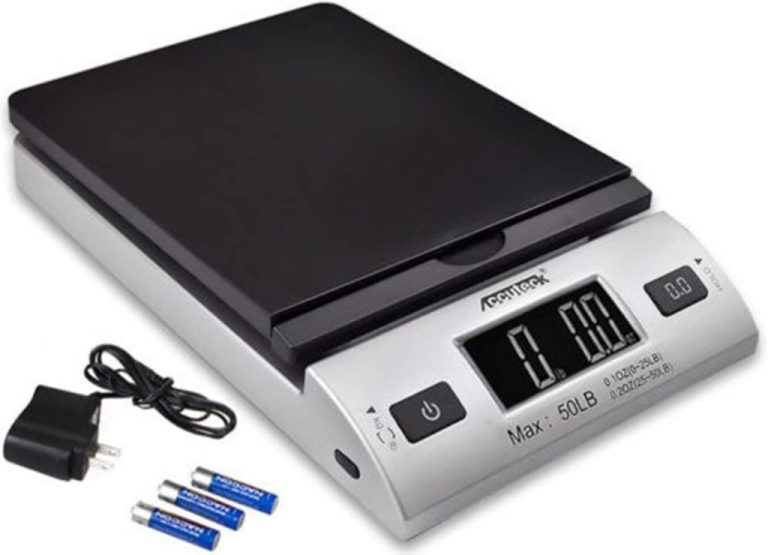What Tools Are Used During Trimming In Pottery?
Trimming is an essential process in pottery making that involves refining the shape, thickness, and surface of a clay pot after it has been thrown on the potter’s wheel and allowed to partially dry and harden. The purpose of trimming is to ensure the finished pot has an even wall thickness, smooth surface, and precise final shape according to the potter’s design.
Trimming involves placing the leather-hard pot back onto the pottery wheel and carefully paring away excess clay using specialized tools. The potter focuses on refining areas like the foot, lip, and walls of the piece. Gentle pressure and smooth movements are required to trim without marring the clay surface. Once trimmed to satisfaction, the pot can be allowed to dry fully before decorative processes like glazing or painting. Proper trimming is key to creating beautifully crafted and well-balanced pottery.
Source: https://www.lakesidepottery.com/Pages/Pottery-tips/Trimming-a-pot-Lakeside-Pottery-Tutorial.htm
Common Trimming Tools
Some of the most common and basic tools used for trimming pottery include sponges, ribs, and loop tools https://www.thestudiomanager.com/posts/the-best-loop-tools-for-trimming-pottery. Sponges help smooth the surface and clean up excess water and slurry. Ribs create flat surfaces and refine the shape. Loop tools are great for getting into tight areas and detailing profiles. In addition to these basic tools, there are some more specialized trimming tools as well.
Chamois tools and leather hard trimming tools are soft, flexible tools that conform to the shape of the pottery piece for smoothing and burnishing. Bead shapers help create decorative elements like beads and collars. Kidney tools are curved blades used to refine details. There are also specialty loop tools like double-ended loop tools and bent loop tools for intricate areas. Having a variety of trimming tools helps potters achieve the shapes and surface qualities they want https://www.thestudiomanager.com/posts/best-carving-and-sgraffito-tools-for-decorating-pottery.
Sponges
Sponges are a versatile tool used in nearly every stage of throwing and trimming pottery. During trimming, sponges help remove excess clay and smooth the surface of pottery forms. There are two main types of sponges used:
Natural sea sponges are soft and absorbent, making them ideal for smoothing and contouring clay surfaces. They come in a variety of sizes and shapes and are mounted on sticks for easy handling (The Ceramic Shop). Sea sponges must be kept moist to prevent drying out and are best used with water rather than a slip.
Synthetic sponges are typically made of cellulose or foam. They are firmer than natural sponges and hold their shape well. Synthetic sponges can be cut into different shapes and sizes. They are more durable than natural sponges and tend to glide over the clay surface smoothly. Synthetic sponges work well with both water and slips (Bailey Ceramic Supply).
When trimming, sponges are used to gently smooth away excess clay and refine the overall form. Applying light pressure in smooth strokes blends uneven textures and creates graceful contours. Sponges can also be used to moisten clay surfaces prior to tooling with ribs or loop tools. Proper use prevents overworking the clay. Sponges should be rinsed frequently during use and allowed to dry thoroughly between sessions.
Ribs
Ribs are scraping tools used to compress and smooth clay surfaces during trimming. They come in a variety of materials and shapes to suit different needs.
The two main types of ribs are metal and wood. Metal ribs are stiff and allow you to apply firm pressure, making them ideal for condensing clay and removing excess material. Stainless steel is a common choice as it resists rust. Wire ribs have a thin, flexible edge that can get into tight spaces. Wood ribs are softer and tend to glide over the surface, useful for delicate smoothing without thinning the walls. Basswood is a popular wood type for ribs.
Rib profiles can be square, round, oval, pointed or waved. A square rib scrapes in a straight line while round has a smoothing action. Pointed ribs help trim foot rings and detail small areas. The waves or scallops of a decorative rib add interesting textures. Having a selection of profiles allows you to match the rib shape to the contour you are working on.
Hold the rib gently but firmly against the clay at an angle of about 30 degrees. Apply even pressure and use smooth, diagonal strokes as you turn the wheel to compress the surface. Use a gentle touch around rims and delicate details. Keep the edge clean by frequently wiping it free of clay buildup. Ribs can also be used to shape and widen foot rings. Always keep them slightly damp but not dripping wet.
Loop Tools
Loop tools are curved metal or wooden tools used to refine the shape and surface of pottery. They come in a variety of shapes and sizes for different purposes:
- Teardrop shaped loop tools help compress clay and remove throwing lines
- Round loop tools smooth curves and refine details
- Pointed loop tools cut clay and create decorative lines
When using loop tools, hold the tool gently and apply even pressure as you move it along the surface. Slow movements help compress the clay smoothly without tearing it. Loop tools can be used to:
- Refine curves and add contours
- Compress clay to thin sections
- Cut away excess clay
- Create decorative lines and textures
With practice, loop tools give potters precise control during the trimming process. Using the right sizes and shapes allows trimming with finesse to create refined, professional looking wares.
Chamois Tools
Chamois tools are made from chamois leather, which comes from sheep or other ungulates. Chamois leather is soft and absorbent, making it ideal for smoothing and finishing wet clay. Some key benefits of chamois trimming tools include:
– Gently smooth away excess water and soften leather-hard surfaces
– Create a consistent finish without scratching the clay
– Can be used on both wheel-thrown and handbuilt pieces
When using a chamois tool, it helps to have the leather damp but not dripping wet. Gently glide the tool along the surface to absorb water and create an even texture. Avoid pressing too hard or dragging the tool, as this can leave streaks. Chamois tools are great for giving a uniform satin-like look. Rotate the tool often to expose a clean surface. Rinse and wring out frequently while working to control moisture levels.
In addition to finishing, chamois tools can aid in shaping and detailing. The soft leather conforms nicely for smoothing curves, texturing, and adding detailed effects. Maintain a light touch and work slowly to refine forms. Chamois trimming tools produce subtle, elegant results when used with care.
Bead Shapers
Bead shapers are specialized trimming tools used to shape and refine rims, lips, and decorative beads on wheel-thrown pottery. They come in a variety of shapes and sizes to achieve different effects.
To shape and refine rims, bead shapers with rounded profiles are used. These can be rubbed against the inside or outside of rims to soften edges and create flowing curves. Using the corner of the bead shaper gives more control for sharper profiles.
For enhancing or creating decorative beads and ridges, bead shapers with pointed tips are used. These can be pressed into the clay wall to push out sections, forming decorative shapes and patterns. The angle and amount of pressure applied allows for variations in the bead shape and size.
Bead shapers with flat paddle-shaped ends can also be used to shape wider beads by compressing the clay outwards. These flat surfaces help smooth and blend the beads into the overall surface design.
Using a variety of bead shaper profiles and techniques allows potters to create personalized decorative touches and refined rims during the trimming process.
Other Specialty Tools
In addition to the more common trimming tools, there are some specialty tools that serve specific purposes during the trimming process:
Kidney tools have a curved, spoon-like shape that allows you to smooth and shape the inside curves of pieces in hard to reach areas. They are useful for detailing tight spaces that other tools can’t access.
X-acto knives have a very sharp, precise blade that lets you trim and cut clay with intricate detail. They are great for fine detailing work and cutting away thin pieces of clay.
When using specialty tools like these, take care not to apply too much pressure or force. Let the shape and sharpness of the tools do the work for you. Kidney tools and x-acto knives give you surgical precision for detailed areas, but should be used delicately.
Choosing Tools
When choosing trimming tools, there are several factors to consider:
-
The type of clay you work with – Certain tools work better with porcelain vs stoneware or earthenware. Porcelain is very dense and requires tools that can trim it smoothly without tearing the clay.
-
Your budget – Trimming tools can range greatly in price. Cheaper tools may be less durable but can work fine for beginners. Invest in quality tools as your skills progress.
-
The types of pieces you make – Sculptural pieces require different tools than wheel-thrown vessels. Consider the shapes you want to achieve.
-
Your hand size and grip – Pick tools sized and shaped for comfort based on your hands.
-
Your trimming style and techniques – Some tools lend themselves better to certain trimming motions.
When starting out, build a well-rounded toolkit with a few essential trimming tools. This allows you to handle a variety of tasks. Add specialty tools over time as needed. With experience, you’ll discover which tools best suit your needs.
Proper Use and Care
Using trimming tools effectively requires practice and skill. Hold tools at a 45 degree angle against the clay and apply gentle, even pressure as you trim. Let the tool do the work rather than forcing it. Dip tools in water frequently to keep clay from sticking. Develop a light touch and work patiently to achieve clean cuts and smooth surfaces.
Clean tools after each use with warm water and a stiff brush to remove all clay residue. Allow tools to air dry completely before storing to prevent rusting. Store tools in a dry, protected area.
Regular sharpening extends the life of a tool. Use a diamond sharpening stone lubricated with water. Hold the beveled side down at a constant 20 degree angle and slide the blade across the stone with light pressure. Check sharpness frequently. It’s better to sharpen tools frequently with just a few swipes rather than waiting until they are very dull.
Loop and specialty trimming tools require extra care when sharpening to avoid damaging their delicate shape and edges. Refer to the manufacturer’s advice for proper sharpening methods. Sources recommend avoiding mechanical sharpeners which can overheat and ruin trimming tools. Instead, use a fine grit whetstone lubricated with mineral oil to carefully hone these tools by hand.
With practice and proper care, quality trimming tools can last for many years. Keeping them sharpened and in good condition will lead to easier, faster trimming and better results.


